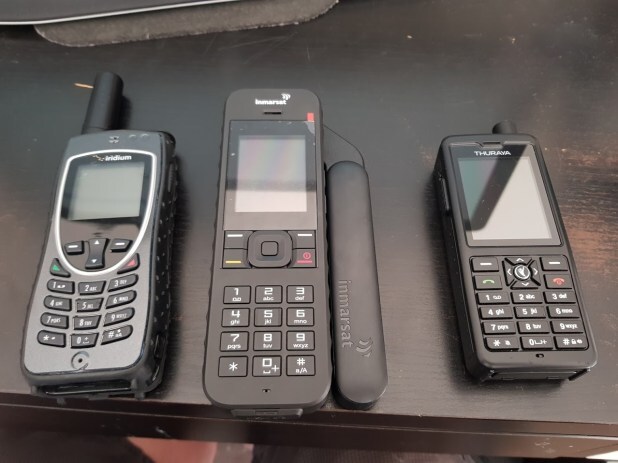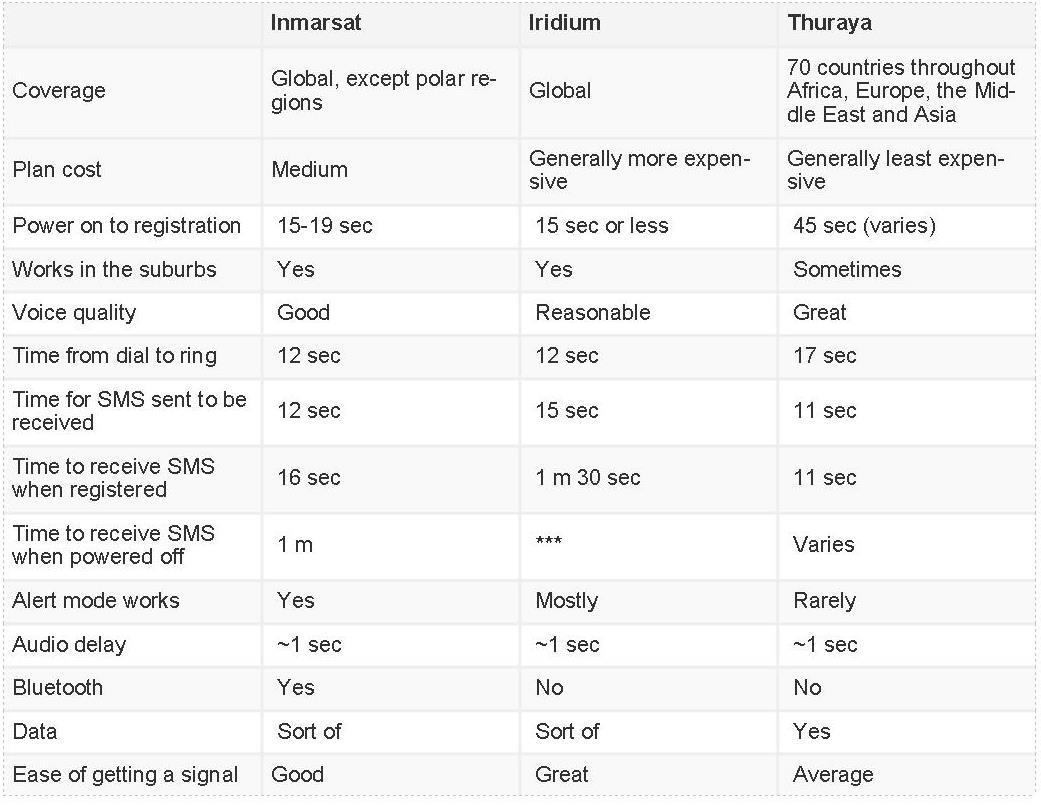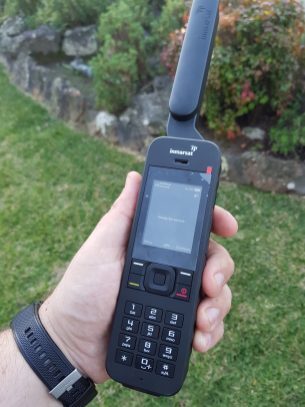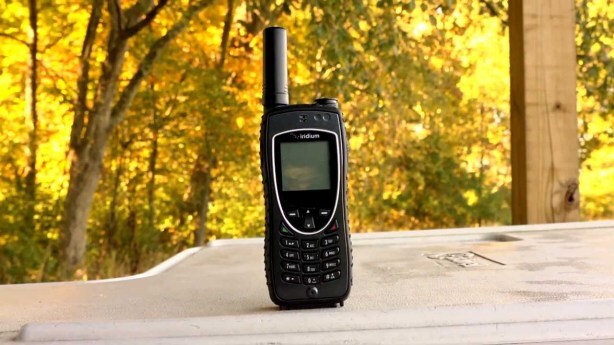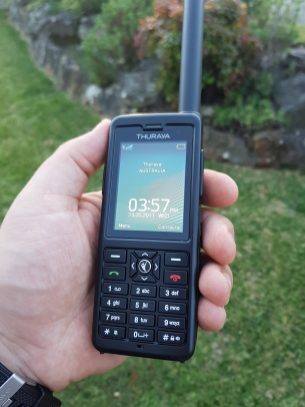Blogs
Comparison of Iridium vs Inmarsat vs Thuraya in the field
We’ve been looking at satellite communications for the last few weeks as part of our Into the Wild series, and we thought what better way to compare the options available than to grab three of the leading satellite phones and take them out into the field and see how they perform alongside each other.
We loaded up with the following phones:
* Iridium 9575 Extreme
* Inmarsat ISatPhone 2
* Thuraya XT Pro
With these phones ready to go, we set off, and here are our findings.
COMPARING THE NETWORKS
Firstly, as the names might suggest, these three phones work on three very different systems. Unlike normal mobiles, satellite technology isn’t interchangeable; if you want to use Iridium, you use an Iridium supplied handset. If the network no longer meets your needs, you need to buy a new phone from a new network to use their network, and there’s no roaming per se — no coverage means no coverage, unless you can move somewhere that there is. In this respect, satellite telephony is like the mobile technology of fifteen to twenty years ago, but in other ways, it’s far, far more advanced.
For one, with a satellite phone, no coverage is something that you’re very, very rarely going to be concerned with. These days, you can make calls, send and receive messages, and — in some cases — get on the Internet wherever (and we do mean wherever) you happen to be.
Here’s a quick rundown of the three satellite networks we’ve looked at:
Fast Facts: Satellite Networks
Iridium is best described as a constellation of low-earth orbit satellites (there are 66 in operation) which orbit around the earth constantly. With this many satellites, in constant motion, there’s excellent coverage just about everywhere. In fact, the only place where coverage can reduce (and even then, only slightly) is around the equator, where the satellites are spaced furthest apart. Iridium supports voice, SMS and data, though data speeds are limited to 2.4kBps (in other words, very slow). Iridium offers coverage across the entire face of the earth.
We have reviewed Iridium’s Go! data access terminal which gives you limited access to Internet services, but with a maximum speed of 2.4kBps, it’s (practically) restricted to email, weather, and limited social networking.
Inmarsat effectively uses three geo-synchronous satellites to provide coverage to virtually everywhere on earth, except for the two polar regions. It does so with a satellite located over each of Indonesia (roughly), northern Africa, and just south-west of the US Pacific Coast. They’re stationary, meaning you won’t lose signal if you don’t move (as can happen on Iridium), but equally, if you don’t have signal, you have to move to a place where you do — with Iridium, you can just wait a moment and chances are satellites will have moved to give you coverage. Voice, SMS and data are all supported, though (without specialised equipment) data speeds are fairly slow.
Inmarsat’s IsatHub provides satellite broadband data at up to 240/384kbps Tx/Rx, plus a dedicated voice line and SMS capability. If you’re looking for connectivity beyond calls/SMS, this may be an option.
Thuraya also uses geo-synchronous satellites, but it has only two, and they’re in fairly specific locations. There’s one over Singapore, and one just off the eastern coast of the African continent. With these two satellites, Thuraya offers coverage to roughly 70% of the globe, including Australia, Asia, Europe and Africa. The US, New Zealand and southern American countries are not covered. Given the location of the satellites, coverage in some parts of Australia can be difficult, but usually possible. Voice, SMS and reasonably quick data are available (depending on your handset).
Thuraya also offer satellite broadband terminals, and although not cheap, they offer Internet access at up to 444/404 kbps down/up speed.
COMPARING THE PHONES
Before we discuss the relative and subjective merits of each of the three phones (and their networks), we carried out some tests on each phone, seeing how they perform a range of standard tasks that a satellite phone user may require — things like how long the phones take to power up, to get coverage, to make a call, for messages to be received and so on.
Let’s unpack some of this, because there’s more to the story than just a comparison table.
First, power on to network registration — this is a function of how quickly the phone powers up, finds a satellite signal, finds a GPS lock (if needed), and how easy it is to see the satellites. Overall, Iridium mostly wins this, because coverage is so easy to obtain, and the Iridium phones power up fairly quickly. They don’t need a GPS lock to work, and so 15 seconds was about standard for getting ready to call.
Inmarsat is a little slower, only because it requires a GPS fix before it’ll let you register on the network. This can be quick — if you haven’t moved around much — but if you have, it can take a little while. Thuraya loses out, only because their satellite can be so damned hard to find — unlike the other two, it’s VERY directional, meaning that unless you’re pointing the phone in the right direction, you simply won’t get a fix at all.
This leads on to the second point of working in the suburbs; they all do, provided you can see the sky clearly. Thuraya can’t be recommended here, only because it’s so directional and in the suburbs, there’s so many things which can block that part of the sky (trees, houses, buildings, etc). But that said, in the suburbs, you simply wouldn’t use a satellite phone…
Voice quality is subjective, but we found Thuraya to be the clearest and most mobile-like. Inmarsat’s voice quality was great for a conversation, but you definitely noticed some clipping. Iridium’s voice quality was the most tinny / robotic of the three.
In terms of time to call / send an SMS, they’re all about the same – 12 seconds or so. Receiving calls and SMS is a bit different though; unlike a mobile that will ring if it has signal, satellite phones are a bit more complex. You can’t have it powered on and in your pocket and just expect it to ring — there’s a good chance the signal will be blocked by your body.
However, if you’re holding the phone and it has good signal, receiving a call or SMS is rather timely, though Iridium can be a bit delayed for SMS. If someone sends you an SMS while you’re out of coverage, though, things get really hit and miss. Inmarsat seemed to take about a minute on average after power on, whereas Iridium and Thuraya varied between a minute or more, or simply not receiving it at all.
This brings us to alert mode; the satellite networks offer a high power signal which is meant to be enough to get your phone to ring, so you can then raise the antenna, obtain full network signal and receive the call. On Inmarsat and Iridium, this feature worked very well, and maintained alert signal in vehicles, while walking around and even sometimes indoors. On receiving a call, the phone alerts you to move to a place with clear reception to take the call – but you have to move fairly quickly.
Thuraya just never seemed to work in alerting mode. It offers the feature, to be sure, but the very directional satellite signal meant that – in practice – it never had enough signal to even alert you a call was coming.
If this feature matters, Iridium? or Inmarsat work much better, but Inmarsat offers the best user experience – eg for an SMS alert it says SMS alert, raise antenna to receive. Very intuitive.
You can use satellite phones for data, but in practice (and for reasons of cost) you probably wouldn’t. Each of the three phones supports data modes, but none are easy to use this way. You’re far better off with a dedicated data terminal for this purpose.
In terms of convenience, Bluetooth is handy here because you need to think about the orientation of your phone while on a call, though moreso on Inmarsat and Thuraya. A Bluetooth headset means you can move around and keep your phone steady, or at least well oriented, and keep talking. Sadly, though, only Inmarsat’s ISatPhone 2 supports Bluetooth – Iridium and Thuraya have no handsets with this capability, though they do support wired headsets as a consolation prize.
Overall, I found Inmarsat’s service offering was the best overall, in that the handset was quite easy to use, offered Bluetooth, easily obtained signal and had the best voice quality. I was able to make a lengthy phone call in a suburban environment, walking around, without paying much attention to the antenna or what I was doing. It was just like a mobile call.
Iridium is my second pick. Coverage is much better, and works in places where Inmarsat just won’t. I was able to make Iridium calls from a moving vehicle with ease. Voice quality isn’t quite as high, but certainly clear enough to carry on a conversation. The phone hardware is very basic, reminiscent of a Nokia handset from twenty something years ago. It’s not meant to be a smartphone, and it’s far from one, but it can make calls just about anywhere and communicate via email and SMS easily enough.
To me, Thuraya was the disappointment. While the XT Pro handset was really impressive, with a colour display and easy to use features, it was let down by the nature of the Thuraya network – coverage was so much harder to obtain and keep that really it was hard to recommend. In an emergency, it might be both acceptable and a failure; if it works, it could save your life. If you can’t see the satellite, or can’t get a signal long enough to make a call, it’s useless.
We’re told in places closer to the equator, Thuraya works so well you could almost use it like a standard mobile phone, with the same cavalier attitude to reception… But in Australia, at least, it doesn’t work that way.
WHICH SATELLITE PHONE SHOULD YOU BUY?
There’s a few factors to take into account. First, do you need a satellite phone? Australia’s mobile coverage is ever increasing, and there’s a lot of remote places where you can now use your normal mobile without need for a satellite phone.
If you need one, you’ll need to consider coverage, cost, and functionality.
Coverage
Iridium clearly wins on coverage, as it is truly global, and better yet, with orbiting satellites, even if you don’t have coverage one minute, you likely will soon after. This can be good and bad — your calls may drop if your coverage is limited and the satellite you’re using moves, but another will be in view soon after. Thuraya and Inmarsat either have coverage, or they don’t. No signal means you have to move to where the signal is visible, and in some places, this mightn’t be possible – e.g. in a valley, in heavy bush, or if there’s a mountain between you and the satellite’s location in the sky.
Consider your use case as well; will you be using your phone on foot, from a vehicle, on a boat? On foot, things are a lot more even. In a vehicle (or anything that moves, really) you’ll need to consider an external antenna for reliable, ongoing coverage, especially in a car. Iridium may be best in a vehicle, with Inmarsat a close second if you buy a roof-mounted omnidirectional antenna. Without this, chances of a satellite lock and maintaining it in a moving vehicle are reduced.
Cost
Cost is a relative thing; satellite telephony isn’t cheap cheap, but it’s nowhere near what it used to cost. Most plans offer calls that cost around $1.50 per minute; it sounds dear – in the era of virtually unlimited calls on normal mobiles – but if you’re only needing to stay in touch occasionally, or in an emergency, those costs are simply irrelevant.















